
Photo is courtesy of the Alaska Native Tribal Health Consortium.
syəcəb

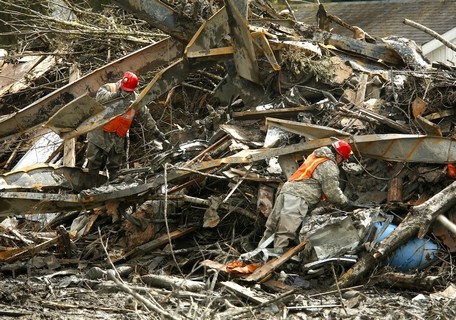
By Rikki King and Eric Stevick, The Herald
EVERETT — President Barack Obama will visit the site of the Oso mudslide today, marking one month since the disaster that took at least 41 lives and destroyed a state highway.
The president will meet with victims’ families, survivors and first responders.
Much of those conversations will be private, though some may be able to catch a glimpse of Air Force One landing at Paine Field in Everett about 12:30 p.m.
Few other details were made public Monday about the president’s itinerary.
The confirmed death toll from the slide rose to 41 Monday, with two people still listed as missing. This weekend, Harborview Medical Center in Seattle released the last of its patients injured in the slide.
A local incident-management team is expected to take over command at the site again this week, another sign that the massive operation is shifting gears.
Highway 530 remains blocked. A flood warning is in place for the area east of the slide along the North Fork Stillaguamish River until Thursday afternoon.
The Secret Service began arriving in Arlington, Darrington and Oso weeks ago after Obama’s visit was announced. Military aircraft could be seen flying in Marysville and Arlington over the weekend as the president’s visit approached.
The day will mark Obama’s second visit to Snohomish County while serving as president. He last was here on Feb. 17, 2012, when he toured The Boeing Co. plant in Everett and spoke to factory workers.
That year was the first time in nearly two decades that a serving president visited the county.
Snohomish County Executive John Lovick said he is looking forward to speaking with Obama.
“To meet the president is just going to be beyond words for me,” Lovick said Monday.
Lovick was raised in Robeline, La., where the population now is just 179 people, he said.
“I never thought I would meet a city councilman let alone the president,” Lovick said.
Many local police officers and firefighters also are expected to play a role in today’s visit. They were unable to provide details, though, deferring questions to the White House.
The presidential visit two years ago cost local police and fire departments and county government more than $30,000. The expenditures included overtime staffing and fuel.
After visiting Snohomish County, Obama is scheduled to go to Asia, with stops in Japan, South Korea, the Philippines and Malaysia, according to the Associated Press.
Lives continue to be disrupted by the slide.
On Monday, the Federal Emergency Management Agency announced that assistance had been approved for people in the Arlington, Darrington and Oso areas whose commutes to work, school and medical appointments are detoured around the slide, through Skagit County. That will happen through individual FEMA assistance applications.
Businesses that need help should contact the Small Business Administration at www.sba.gov/disaster or 800-659-2955.
The Arlington School District has been sending a school bus to pick up students in Darrington, most of whom have opted to stay in the district for the rest of the school year.
Many students who live east of the slide are staying with family and friends in Arlington on school nights. At least two families have transferred students between the Arlington and Darrington school districts to avoid the lengthy detour, school officials said.
Also on Monday, two high-ranking prosecutors urged people to be aware of potential fraud related to the mudslide. Western Washington’s U.S. Attorney Jenny Durkan and Snohomish County Prosecutor Mark Roe warned people thinking about scamming mudslide victims or the government that they will face the full brunt of the law if they are caught.
“We will not be here to throw the book at you,” Roe said. “We will be here to throw the whole library.”
So far, there have been anecdotal reports of possible fraud, but no concrete evidence, Durkan said.
The prosecutors said fraud has been a common problem after other national disasters and they want to get in front of it in Oso.
The National Center for Disaster Fraud has documented many cases that resulted in prosecutions. In one instance, a woman was sentenced to three years in prison after falsely claiming she had a home in Mississippi that was destroyed when Hurricane Katrina hit in 2005. She also received temporary shelter from a charity where she stole the identities of hurricane victims and charged thousands of dollars on credit cards she took out in their names. “We will protect the victims and we will prosecute those that try to turn this tragedy into criminal profit,” Durkan said.
Among other tips, the prosecutors said people making donations should never be feel pressured to contribute and should never give personal or financial information to anyone who solicits money. They also referred anyone suspicious of fraud in relief efforts to contact the National Disaster Fraud Hotline at 866-720-5721 or by email at disaster@leo.gov.
Meanwhile, the Washington State Patrol continues to remind people that there is no public access to view the mudslide. The roadblocks are several miles away.
The Patrol continues to turn away as many as two dozen cars a day, trooper Keith Leary said.
“The area is not a tourist attraction, and the high level of respect for those who are still missing and their families is our priority,” Leary said.

By Phil Plait
Slate.com April 22, 2014
Today is Earth Day, a worldwide celebration of our home planet. I know you’ll be hearing a lot of talk about the environment today, humanity’s global impact, and more … which is great, and I wholly support that conversation (obviously).
But as an astronomer and science dork, I do love me some fun factoids. So I gathered together/calculated a few to give you a better appreciation of our planet’s place in the Universe. You might want to check out the ones I posted last year, too. You can’t know too much about Earth.
1) Earth Day is April 22 every year. On average (jumping over leap years and such), between subsequent Earth Days our planet moves about 940 million kilometers (580 million miles), the circumference of its orbit around the Sun. That means it’s faster—way faster—than a speeding bullet: about 30 km/sec (18 miles/sec)! Typical rifle bullets travel 1-2 km/sec, so the Earth outpaces them handily.
2) It’s not a small world after all. The surface area of the Earth is about 510 million square kilometers, or 197 million square miles. It’s not a perfect sphere (see listing No. 4 here), but if it were, using the surface area to find the Earth’s diameter would give you a ball 12,742 km (7,900 miles) across.
3) The Earth is the biggest of the terrestrial (rocky, as opposed to Jupiter-like gas giant) planets in our solar system.
4) Venus, the closest planet in the solar system to Earth’s size, has a diameter of 12,104 km (7,504 miles), 95 percent the width of Earth. It has about 82 percent the mass of Earth, too, making it our twin. However, its thick atmosphere is mostly carbon dioxide, it rains sulfuric acid, the air pressure on its surface is 90 times Earth’s, and the average temperature is a lead-melting 460 C (860 F). So it’s more like our evil twin.
5) Nearly 2,000 confirmed exoplanets (worlds orbiting other stars) have been found so far. The smallest, Kepler-37b, is barely bigger than our own Moon! Another, KOI-314c, has the same mass as Earth but is so hot it’s puffy, with a huge atmosphere. The planet that has the best chance of being most like Earth is Kepler-186f, which has 1.1 times the Earth’s diameter and is the right distance from its star to have liquid water. We really don’t know what it’s like beyond that, though. It might be more like Venus, or Mars.
6) We’ve only just started looking for other planets, though. There may be billions of Earth-size planets in our galaxy alone.
7) Coming back home again, Earth has something no other planet we know of has: a lot of water on the surface. It’s about 71 percent water by area, dominated by the Pacific Ocean, which covers a staggering 155.6 million square km (60 million square miles) of the surface. That’s nearly a third of the planet.
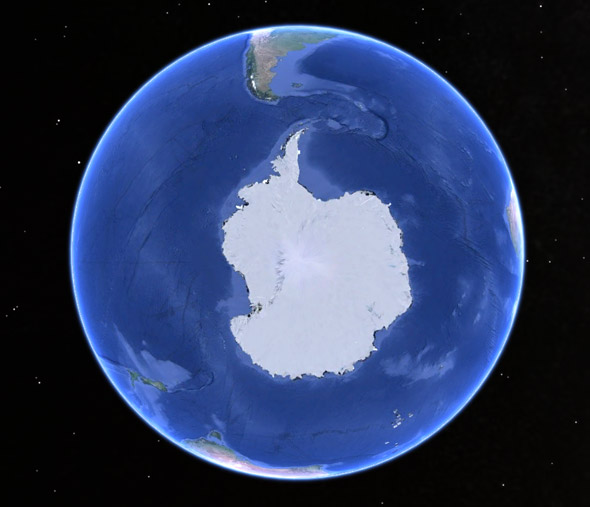
8) Most of the Southern Hemisphere (by a long shot) is covered in water: About 80 percent of the planet’s area south of the equator is water. North of the equator it’s about 60 percent.
9) Water exists naturally in all three physical states on Earth’s surface: solid (ice), liquid, and gas (water vapor). Due to a peculiar property of water—called its triple point—it can even exist in all three states at the same location and time. So now when things go wrong, you can say, “Well it could be worse: It could be raining and snowing and steaming!”
10) The more we look, both in our neighborhood and in deep space, the more we find that our Earth is one-of-a-kind. Even if we do eventually spot those billions of other planets similar in size to Earth, it’s unlikely they will be just like ours, with our exact balance of chemistry, temperature, and life. Heck, in the distant past the Earth didn’t look like it does now, and it’s the same planet.
What this tells us is that what we have now is precious, unique, and vital to us and ours. We don’t have an emergency backup, a summer home, a spot we can retreat to. The Earth is all we’ve got. We need to treat it that way.
Phil Plait writes Slate’s Bad Astronomy blog and is an astronomer, public speaker, science evangelizer, and author of Death from the Skies! Follow him on Twitter
Tulalip, Washington — Give Mom something to brag about this Mother’s Day…be the kid who got her out of the kitchen, making her the toast of the table. On Sunday, May 11, children of all ages can celebrate the special woman in their lives at an opulent brunch in the Tulalip Resort Casino Orca Ballroom, with seating at 10:30am and 1:00pm.
Every matriarch will feel like a diva dining her way through a dazzling array of breakfast and lunch favorites, including Carving, Omelet and Egg, Pasta, Quiche, and French Toast/Waffle stations. If Mom’s a salad lover, she can select among six – from Seafood Pasta with bay scallops and shrimp to Tossed Mexican Caesar with avocado vinaigrette. Hot entrees run the gamut from Chicken Saltimbocca to Ginger Lemongrass Steamed Clams and Mussels. Assorted breakfast pastries such as muffins, croissants, and Danish complement the menu.
The dessert buffet could be a meal on its own. Colorful French Macarons beckon enticingly as does springtime Strawberry Shortcake Trifles. Whole Tropical Fresh Fruit Tarts hold court, alongside decadent Chocolate Fondant Cakes with raspberries and cream. If Mom likes her chocolate straight up, she can finish her meal with Milk, White and Dark Chocolate Ganache Disks. Cheesecake lovers need not despair, as there will also be an alluring assortment of minis.
For the wee folk, there is a kid’s knee high buffet featuring Chicken Strips, Macaroni Cheese Bites, and Mini Pizzas.
Celebrate Mom in the grand style she deserves at Tulalip Resort. Mother’s Day brunch, including a welcome Mimosa, is priced at $42 inclusive for adults. Children 4 to 12 are $18. Call 360-716-6888 for reservations.
Those looking for a Mother’s Day gift idea as special as the recipient should consider the T Spa’s “Wildflower Pedicure.” A perfect post buffet treat, Mom can literally feel the stress ebb during this 60 minute treatment. A floral foot soak infused with Linden and Orange blossom essence is followed by a gentle, but invigorating exfoliating scrub. This spa pedicure includes a warmed stone massage for tired tootsies, foot mask and paraffin treatment. For reservations and additional information, call (360) 716-6350.
About Tulalip Resort Casino
Award winning Tulalip Resort Casino is the most distinctive gaming, dining, meeting, entertainment and shopping destination in Washington State. The AAA Four Diamond resort’s world class amenities have ensured its place on the Condé Nast Traveler Gold and Traveler Top 100 Resorts lists, as well as Preferred Hotel & Resorts membership. The property includes 192,000 square feet of gaming excitement; a luxury hotel featuring 370 guest rooms and suites; 30,000 square feet of premier meeting, convention and wedding space; the full-service T Spa; and 7 dining venues, including the AAA Four Diamond Tulalip Bay Restaurant. It also showcases the intimate Canoes Cabaret and a 3,000-seat amphitheater. Nearby, find the Hibulb Cultural Center and Natural History Preserve, Cabela’s; and Seattle Premium Outlets, featuring more than 110 name brand retail discount shops. The Resort Casino is conveniently located between Seattle and Vancouver, B.C. just off Interstate-5 at Exit 200. It is an enterprise of the Tulalip Tribes. For reservations please call (866) 716-7162.
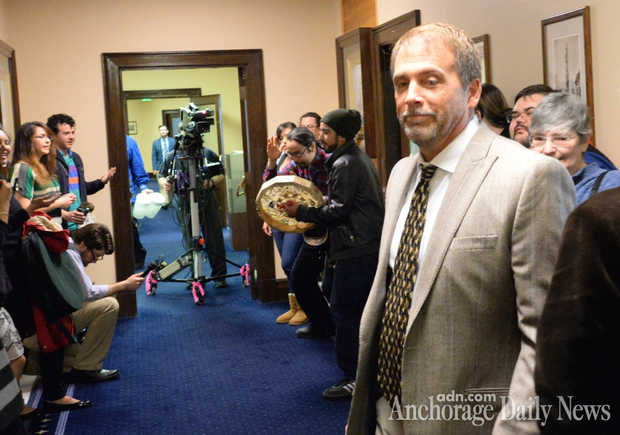
By RICHARD MAUER
rmauer@adn.comApril 20, 2014
UPDATE: The Senate passed the language bill at 3:15 a.m. Monday. The vote was 18-2, with Sens. John Coghill and Pete Kelly, both Fairbanks Republicans, the only no votes. Among the Senators to give impassioned speeches in favor of the bill was Sen. Lesil McGuire, R-Anchorage, who said there wasn’t anything the state could do about what happened to Native language speakers in the past, but it could help people into the future.
ORIGINAL STORY:
JUNEAU — Fearing their language bill was getting caught up in end-of-session politics, Alaska Natives held a demonstration in front of Sen. Lesil McGuire’s Capitol office Sunday, demanding she send it to the Senate floor before it was too late.
After 30 minutes of drumming, dancing, speeches and story telling, McGuire’s chief aide, Brett Huber, said McGuire would do just that, put it on Sunday’s Senate calendar. He said she supported the measure.
The bill, House Bill 216, had broad backing in the House, where it passed 38-0 on April 16. It would recognize 20 Native languages as official languages of the state, though it would require only that English, the state’s first legal language, be used in official documents and meetings.
Though of little practical effect, Native speakers said the measure was rich with symbolic significance, a recognition that historical efforts by the dominant culture to forbid them their languages was wrong — and had failed. Many in the hallway Sunday had been in the gallery last week as the bill passed the House, cheering after the roll was taken and the tally was unanimous.
The demonstrators, from little children in Easter clothes to elders who needed help to walk, began arriving around noon. The legislative calendar showed that the language measure was parked in the Rules Committee Saturday, a limbo zone for legislation, especially in the waning days of a session. Bills can leap out of Rules and land on the floor, or die there when the session ends — which explains why the word “powerful” often precedes the title, “Rules chairman.”
It’s unclear why McGuire was holding the bill, or even if she was. She was in and out of meetings all day and unavailable for comment. As the demonstration was gathering steam, she walked out of the her office in a bright yellow dress and strolled past the crowd without turning or saying a word. Later, she texted that the majority leader, Sen. John Coghill, R-Fairbanks, had a concern about the bill.
“I am putting it up though, no matter what,” she texted. “Always was going to.”
Coghill later said he didn’t have time to talk, but at a Senate Judiciary Committee hearing last week, Coghill said he was concerned that the bill would supersede the 1998 voter initiative that made English the state’s official language and which won by a landslide. He suggested that the bill be changed to declare the Native languages only “ceremonial” and not “official,” but the original bill was left intact.
Before Huber’s announcement, the group was clearly anxious about what would happen.
“It’s real disappointing after what happened on the House side,” said Beth Geiger. “With all the momentum it had, it’s shocking it’s sitting like that.”
X’unei Lance Twitchell, a Native language professor at the University of Alaska Southeast, said he had heard many expressions of support by legislators and was puzzled by the bill’s apparent lack of traction.
“If they support this bill, why don’t they use their political power?” he said.
Later, after Huber announced McGuire would push the bill forward, Twitchell said he was happier but still wanted to see it through. The demonstrators had no plans to leave the hallway, he said.
“We’re going to stay till it passes,” Twitchell said. “If they want us to enjoy our Easter, they’ll put it on the floor first.”
Reach Richard Mauer at rmauer@adn.com or (907) 500-7388.
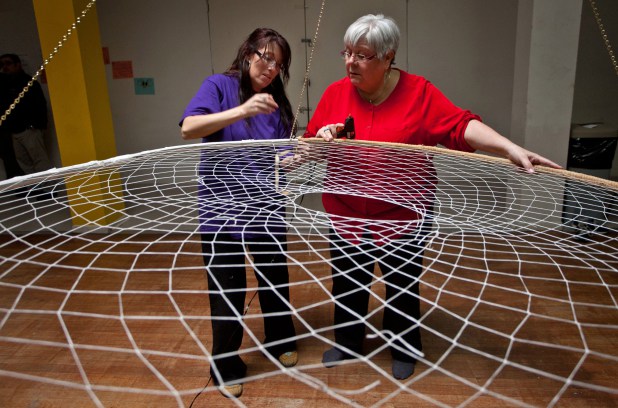
By Christine Bennett For Metro
April 16, 2014
Halifax community members gathered on Wednesday to weave a 10-foot dream catcher to honour missing and murdered aboriginal women.
The Mi’kmaq Native Friendship Centre on Gottingen Street hosted the event with support from the Public Service Alliance of Canada.
They’re making 824 small dream catchers to hang off the large one, each of those representing one of the aboriginal women currently missing in Canada.
“A dream catcher is to help you have good dreams and take the bad dreams away, but in this case, those women who are missing, their dreams are gone,” said Debbie Eisan, who works at the centre. “We want to make sure that their dreams are not going to be forgotten and their lives won’t be forgotten.”
The purple ribbon on these dream catchers represents the missing woman, and the black bead represents the mourning of that woman.
The bead usually goes in the middle, but this time it’s at the bottom because there’s nothing to celebrate, Eisan said.
This idea came after the death of Loretta Saunders, an Inuit woman who was murdered in February while she was studying at Saint Mary’s University and writing her thesis on missing and murdered aboriginal women.
Eisan is calling on the government to provide equal and fair treatment to aboriginal cases.
“I just want these cases to be treated with the same respect, importance, and dignity as they would any other missing and murdered woman,” she said.
Next week, April 22, former Green Party Vice-Presidential candidate Winona LaDuke and the Cowboy and Indian Alliance made up of Native people, farmers and ranchers will ride on horseback into Washington, D.C. to show their opposition to the Keystone XL pipeline.
The protest on Tuesday will be one of many activities kicking off Earth day 2014 at the National Mall in Washington, D.C. LaDuke’s organization, Honor the Earth will be joining forces with the Cowboy and Indian Alliance a group of about 30 Oglala Lakota Indians as well as a group of non-Native ranchers and farmers from North Dakota and Nebraska that have all joined forces in protest.
Additionally on the final day of protest, thousands have been invited to protest in unison against the pipeline and the Canadian Tar Sands. On Saturday April 26 at 11 a.m. at the National Mall between 7th and 9th streets, the Cowboy and Indian Alliance will make closing arguments against the pipeline.
Instructions on the Reject and Protect website state:
4 days after the Cowboy Indian Alliance tipis first go up on the Mall, we’ll gather at 11 AM on Saturday the 26th at the encampment to make our closing argument against the pipeline. As we gather, everyone there will be asked to make their thumbprint mark on a tipi. Then we’ll hear from the farmers, ranchers, tribal leaders and refinery community members who will be directly impacted by Keystone XL and the tar sands — and who have pledged to lead the resistance should it be approved.
Then, those leaders will carry our painted tipi to present to President Obama, with thousands of people standing behind them. This tipi will represent our hope that he will reject the pipeline, and our promise that we will protect our land, water and climate if he chooses to let the pipeline move forward.
Once the tipi is delivered, we’ll return to the encampment in song and make our pledge to continue resistance to the pipeline should it be approved.
In an e-mail campaign sent from the Honor the Earth Foundation LaDuke writes that many opposers to the pipeline will be in D.C. and will set up at the tipi camp at the National Mall and will ride to the White House “to show Obama and the world that Native Nations will stand firm in asserting our human and constitutionally protected treaty rights in saying NO to the Keystone XL Pipeline.”
In an interview with ICTMN, LaDuke said, “Our communities are continuing our spiritual work in opposing these pipelines – these pipelines threaten our water and our way of life.”
“My sister and my son will be riding horses, I might ride. They have asked me. There will be 30 Cowboys and Indians on horseback going all the way up to the White House on horseback to fight the Keystone pipeline. This is a continuation of that spiritual ride,” LaDuke said.
“To not have the pipeline is what we want, every time you look there is someone else at the White House. President Obama should do the right thing. I have enjoyed the fossil fuels era as have you, but I would like to gracefully exit it not crash my way out. We need to gracefully exit into renewable energies fuel efficiencies and bio diesels with a lot less impact. I have enjoyed it now I’m ready to go.”
LaDuke also said how people can support the cause. “They can support all of this by joining us in D.C. and sending us money, we are in the middle of fighting three pipelines and we are thinly staffed.”
Read more at http://indiancountrytodaymedianetwork.com/2014/04/21/cowboys-and-indians-ride-dc-protesting-keystone-xl-earth-day-154523?page=0%2C1
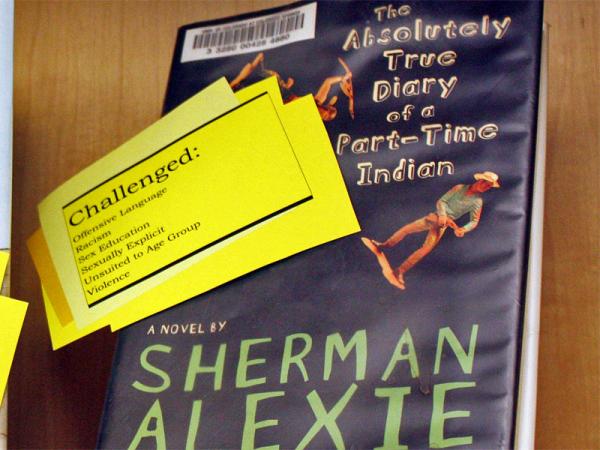
By Jessica Robinson, NW News Network
Two women in Washington have raised enough money to send 350 copies of a controversial book by Sherman Alexie to students in Meridian, Idaho.
It’s a reaction to the Meridian school board’s decision to suspend use of “The Absolutely True Diary of a Part-Time Indian.” Parents complained about profanity and sexual content in the novel.
University of Washington student Sara Baker and a friend in Spokane set up an online campaign to buy and distribute the book to Meridian students with the help of a local teacher. Baker says they received more than $3,000 from Idaho, Washington and at least 15 other states.
“I’ve heard from students that said they read the book and really loved it,” says Baker. “I’ve had English teachers tell me that they teach it in their curriculum and it engages students that hate to read. And then just general fans of the book that can’t believe the people who want to ban it even read the same book.”
The superintendent of the Meridian school district says a committee of teachers, administrators and parents is reviewing the high school reading list and may decide to retain “Part-Time Indian” next fall.
The 2007 young adult novel is inspired in part by Alexie’s own experience growing up on the Spokane Indian Reservation. The book often requires parental consent to read and is frequently targeted for removal. Earlier this winter, the school district in Sweet Home, Ore., considered pulling it from the classroom after parents complained, but the district ultimately kept the book.
In Idaho, the attention generated by the controversy has given Alexie a bump in local libraries and bookstores. There are more than 60 holds on “Part-Time Indian” at the Boise Public Library.
Source: KUOW
Washington state officials have postponed selling 250 acres of timber on steep slopes near the town of Oso.
The Washington Department of Natural Resources had scheduled the 188-acre “Riley Rotor” timber sale and the 62-acre “Home Repairs” timber sale for auction this Wednesday, a month and a day after the March 22 landslide that killed at least 39 people in Oso.
The Riley Rotor site is on state land about five miles southwest of the deadly Oso slide. Much of the site is so steep that the DNR had proposed logging it with helicopters.
Helicopter logging would allow the state to sell an estimated $1.3 million worth of timber from the site without building new logging roads through the steep landscapes of the Stillaguamish River basin. Cutting roads into the hillsides could worsen the risk of landslides, according to the DNR.
In January, the Washington Forest Law Center urged the DNR to leave parts of the area uncut to further reduce the landslide risk.
The environmental group said the proposed cut would put up to a dozen homes, as well as salmon streams, below the proposed sale at risk. It also expressed concern about the combined impact of the sale with logging proposed just uphill, on land owned by Weyerhaeuser.
The DNR replied that maps showing a historic landslide on the site — which would indicate the site’s vulnerability to more sliding — proved to be incorrect once geologists, biologists and foresters from the agency and from the Tulalip Tribes walked the site in person.
“This ‘landslide feature’ was determined to be non-existent,” DNR assistant regional manager Laurie Bergvall told the Forest Law Center in January.
The agency formally approved the Riley Rotor sale on March 4.
DNR officials dismissed concerns the Forest Law Center raised in late March, after the Oso landslide.
“There are essentially no geologic or lithologic similarities between the site of the Riley Rotor timber sale and the Oso landslide,” DNR geologist John McKenzie wrote on April 14. The two sites “could hardly be more different,” he wrote.
The agency’s decision to postpone the Riley Rotor auction surprised the center’s wildlife biologist, Kara Whittaker.
“It was kind of funny because it was just Tuesday, on the 15th, that we got some correspondence from DNR confirming they were going to proceed with the sale,” Whittaker said.
By Friday afternoon, the DNR had reversed itself.
“We’re hoping this reversal is a signal that DNR is committed to changing the way it logs on steep and unstable slopes,” Whittaker said.
“We really did have a thorough review beforehand, but prudence and the changing conditions dictated the decision to postpone until further review,” said Kyle Blum, a deputy supervisor with the Department of Natural Resources.
Blum said the changing conditions included Oso’s near-record rainfall in March as well as the Oso landslide.
Blum said the DNR is also reviewing other timber sales in the Oso area to make sure none of them put public safety at risk.
On Wednesday, the agency postponed the auction of its Home Repairs timber sale in Skagit County, about 17 miles northwest of the Oso slide. That sale of an estimated $770,000 worth of timber would require building a mile and a half of logging road on Cultus Mountain above Nookachamps Creek, which supports six species of salmon.
“Most of the sale area is located on a deep-seated landslide,” according to DNR documents.
This was first reported for KUOW.
By Chris Winters, The Herald
TULALIP — A lawsuit filed against the state Department of Fish and Wildlife has led the state to cancel this year’s entire release of hatchery-raised steelhead trout into Western Washington rivers.
That means that there will be virtually no steelhead fishing in 2016 and 2017.
This week the Tulalips and other local American Indian tribes weighed in, blasting the decision by the state to cancel the release, and the lawsuit that forced the move, filed by the Wild Fish Conservancy, a nonprofit based in Duvall.
The suit was filed on March 31. In a declaration filed April 16 by Phil Anderson, the director of Fish and Wildlife, he wrote that the department’s plan to protect wild steelhead from genetic hybridization with hatchery fish is under review by the National Marine Fisheries Service, but that he had no expectation it would be approved in time for the release.
That approval is necessary so that the program wouldn’t run afoul of the Endangered Species Act, which lists wild steelhead as threatened. Therefore, Anderson decided there would be no steelhead release this year.
A joint statement issued by the Tulalip Tribes, the Lummi Nation and the Upper Skagit Tribe took issue with the basis for the nonprofit’s lawsuit, which, it said, “erroneously concluded that hatchery production, rather than the loss of habitat, is responsible for the depressed state of the Puget Sound steelhead populations.”
The statement from the tribes urged anglers to contact Gov. Jay Inslee, the Fish and Wildlife Commission, and Anderson and to put pressure on the department.
“Maybe the hatcheries do have some impact, but there are greater impacts out there,” said Ray Fryberg, executive director for natural and cultural resources for the Tulalip Tribes.
Habitat loss, environmental change, perhaps even seals waiting at the mouths of rivers to eat the returning fish probably have a greater impact on wild populations than the hatcheries do, Fryberg said.
The fish at issue is known as Chambers Creek steelhead, a strain raised in six hatcheries in Western Washington, including the Whitehorse Ponds hatchery near Darrington.
The hatchery-raised juveniles are released earlier than when wild steelhead hatch, and the difference in timing allows the hatchery-raised adult steelhead to be fished before the wild runs return to their spawning grounds.
A spokesperson for the Department of Fish and Wildlife declined to comment on the lawsuit or the statement from the tribes.
The conservancy’s suit alleges that the state’s hatchery programs allow Chambers Creek steelhead to interbreed with the wild strains, out-compete the wild fish for food and spawning grounds, and that the hatchery operations themselves have suppressed the wild population.
The wild stocks are so depressed that they are in danger of being listed as endangered, which would drastically affect fishing for all salmonid species in the region, said Kurt Beardslee, the executive director of the Wild Fish Conservancy.
Loss of habitat is a critical issue, Beardslee said, but the only two actions that would have an immediate impact on wild populations would be to curtail fishing or to stop hatchery releases.
He cited a recent study conducted in the Skagit River of the impacts of hatchery-raised steelhead on the wild population, one of whose recommendations was to suspend hatchery releases for seven to 10 years to eliminate competition among the species, reduce cross-breeding among populations and increase the survival rate of wild steelhead.
“We have to look at things that can get results immediately,” Beardslee said.
Fryberg said that the lawsuit was a step backward in the struggle to restore wild runs of steelhead and salmon.
“For years and years as co-managers and cooperative managers we’ve always emphasized that we should be working together,” Fryberg said.
With the environment changing rapidly, there is simply no baseline condition to compare it to, and it’s essential to get all the scientific data on the table before acting, he added.
“We have not fished some native runs of fish out here for 20 to 30 years and they still haven’t rebounded,” Fryberg said. “Let’s not run into this hastily.”